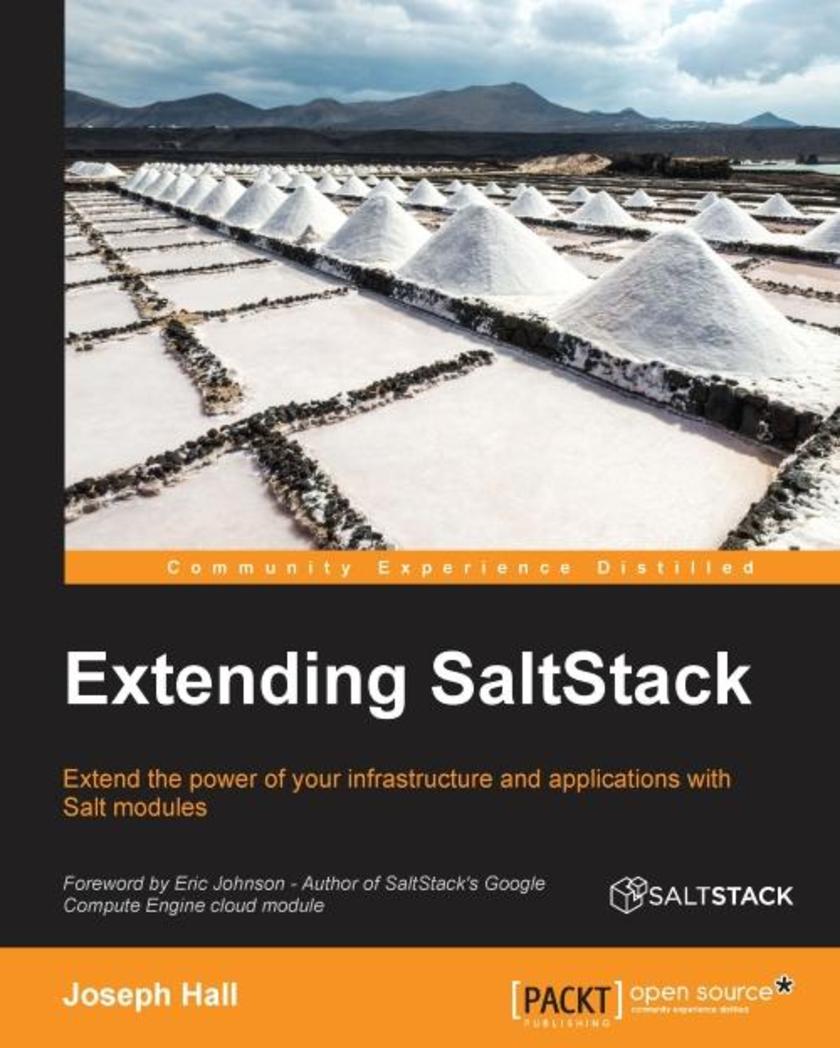
Extending SaltStack
¥80.65
Extend the power of your infrastructure and applications with Salt modules About This Book Get the most up-to-date practical resource on writing new Salt modules and extending Salt Learn through use cases and encounter both commonly-used modules as well as advanced ones Effectively troubleshoot problems and hiccups encountered while building and putting modules to work Who This Book Is For This book is for both new and existing Salt developers who are looking to build and write new Salt modules. Some prior Python development experience is expected. What You Will Learn Understand the working of Salt's Loader system Write several of the most common types of Salt modules Interact between different kinds of modules and build new ones Submit open source modules upstream to the Salt project Make Salt interact with third-party services and applications In Detail Salt already ships with a very powerful set of tools, but that doesn't mean that they all suit your needs perfectly. By adding your own modules and enhancing existing ones, you can bring the functionality that you need to increase your productivity. Extending SaltStack follows a tutorial-based approach to explain different types of modules, from fundamentals to complete and full-functioning modules. Starting with the Loader system that drives Salt, this book will guide you through the most common types of modules. First you will learn how to write execution modules. Then you will extend the configuration using the grain, pillar, and SDB modules. Next up will be state modules and then the renderers that can be used with them. This will be followed with returner and output modules, which increase your options to manage return data. After that, there will be modules for external file servers, clouds, beacons, and finally external authentication and wheel modules to manage the master. With this guide in hand, you will be prepared to create, troubleshoot, and manage the most common types of Salt modules and take your infrastructure to new heights! Style and approach This book follows a step-by-step tutorial-based approach explaining the different types of modules, from fundamentals to complete and full-functioning modules.
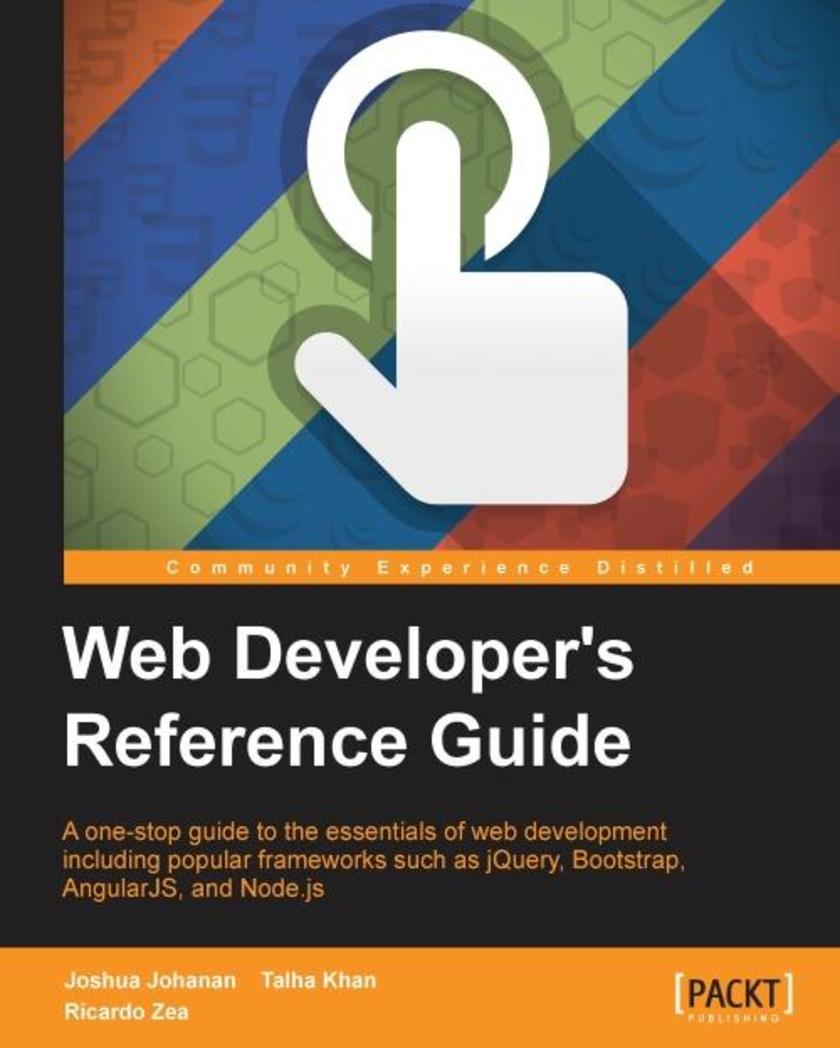
Web Developer's Reference Guide
¥80.65
A one-stop guide to the essentials of web development including popular frameworks such as jQuery, Bootstrap, AngularJS, and Node.js About This Book Understand the essential elements of HTML, CSS, and JavaScript, including how and when to use them Walk through three of the best and most popular web development frameworks – jQuery, Bootstrap, and AngularJS References for any function you will need in your day-to-day web development Who This Book Is For This book is perfect for beginners but more advanced web developers will also benefit. Laid out so you can refer to as much or as little as you need to, with this book you can exhaustively explore essential concepts for modern web developers. What You Will Learn Explore detailed explanations of all the major HTML elements and attributes, illustrated with examples Take a deep dive into CSS properties and functions and master their usage Find clear, concise de*ions of JavaScript syntax and expressions Recognize various JavaScript design patterns and learn the basics of JavaScript object-orientated programming Implement the latest ECMAScript 6 for client-side *ing in your web applications Discover new ways to develop your website's front end quickly and easily using Bootstrap Write JavaScript extensibly using jQuery-JavaScript's feature-rich library Delve into the key Node.js modules used in JavaScript server-side programming Access AngularJS 's important modules, controllers, directives, and services quickly In Detail This comprehensive reference guide takes you through each topic in web development and highlights the most popular and important elements of each area. Starting with HTML, you will learn key elements and attributes and how they relate to each other. Next, you will explore CSS pseudo-classes and pseudo-elements, followed by CSS properties and functions. This will introduce you to many powerful and new selectors. You will then move on to JavaScript. This section will not just introduce functions, but will provide you with an entire reference for the language and paradigms. You will discover more about three of the most popular frameworks today—Bootstrap, which builds on CSS, jQuery which builds on JavaScript, and AngularJS, which also builds on JavaScript. Finally, you will take a walk-through Node.js, which is a server-side framework that allows you to write programs in JavaScript. Style and approach This book is an easy-to-follow, comprehensive reference guide. Each topic, function, or element is listed methodically along with parameters, return values, and de*ions. Examples are also included to help you put the concepts to use quickly in the real world.
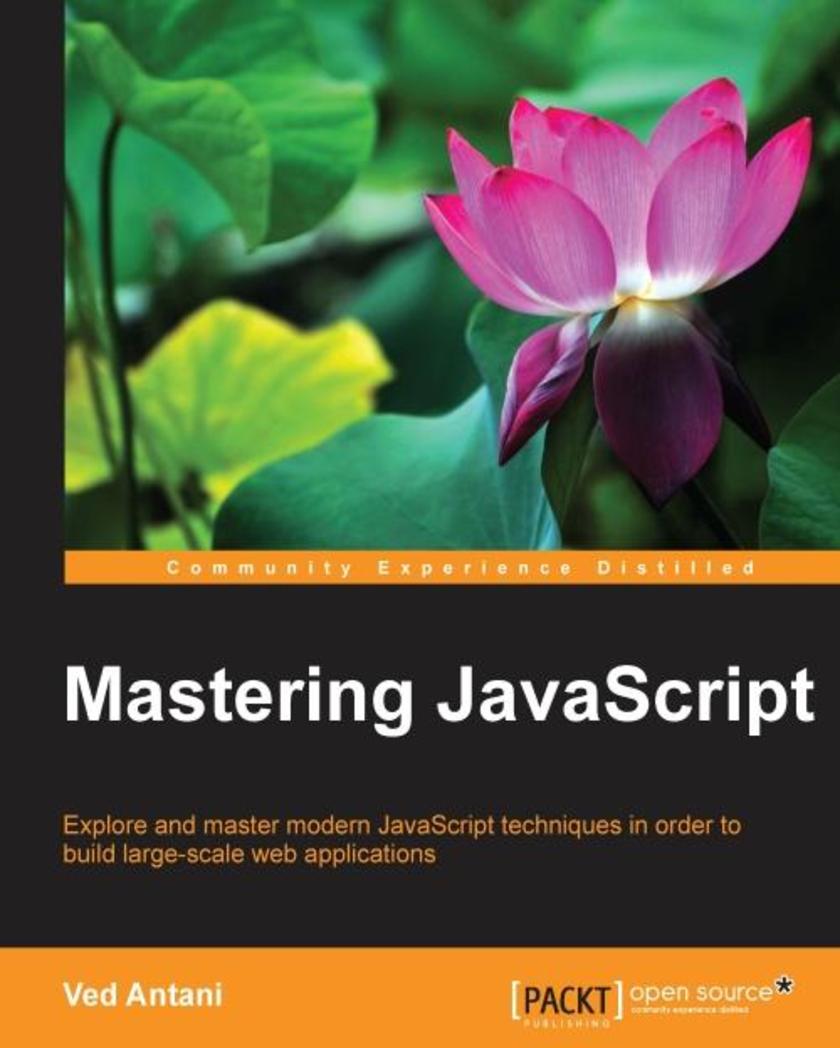
Mastering JavaScript
¥80.65
Explore and master modern JavaScript techniques in order to build large-scale web applicationsAbout This BookWrite powerful code with the high-level functions that JavaScript offersTest and debug issues with JavaScript code using various modern mechanismsOffers an expert's eye on the latest ES6 features and how these advanced tasks fit together in JavaScript as a wholeWho This Book Is ForThis book is ideal for web developers who are looking to master modern JavaScript concepts and design principles. You should already have an intermediate level of JavaScript knowledge before starting this book.What You Will LearnGet a run through of the basic JavaScript language constructsGet familiar with the Functions and Closures of JavaScriptExplore Regular Expressions in JavaScriptCode using the powerful object-oriented feature in JavaScriptTest and debug your code using JavaScript strategiesMaster DOM manipulation, cross-browser strategies, and ES6Understand the basic concurrency constructs in Java* and best performance strategiesLearn to build scalable server application in JavaScript using Node.jsIn DetailJavaScript is a high-level, dynamic, untyped, lightweight, and interpreted programming language. Along with HTML and CSS, it is one of the three essential technologies of World Wide Web content production, and is an open source and cross-platform technology. The majority of websites employ JavaScript, and it is well supported by all modern web browsers without plugins. However, the JavaScript landscape has changed dramatically in recent years, and you need to adapt to the new world of JavaScript that people now expect. Mastering modern JavaScript techniques and the toolchain are essential to develop web-scale applications.Mastering JavaScript will be your companion as you master JavaScript and build innovative web applications. To begin with, you will get familiarized with the language constructs and how to make code easy to organize. You will gain a concrete understanding of variable scoping, loops, and best practices on using types and data structures, as well as the coding style and recommended code organization patterns in JavaScript. The book will also teach you how to use arrays and objects as data structures. You will graduate from intermediate-level skills to advanced techniques as you come to understand crucial language concepts and design principles. You will learn about modern libraries and tools so you can write better code.By the end of the book, you will understand how reactive JavaScript is going to be the new paradigm.Style and approachThis is a comprehensive guide with a clear focus on practical use cases and patterns. Each chapter consists of best practices, useful advice, and a bunch of easy-to-follow examples that will build up your skills as you advance through the book.
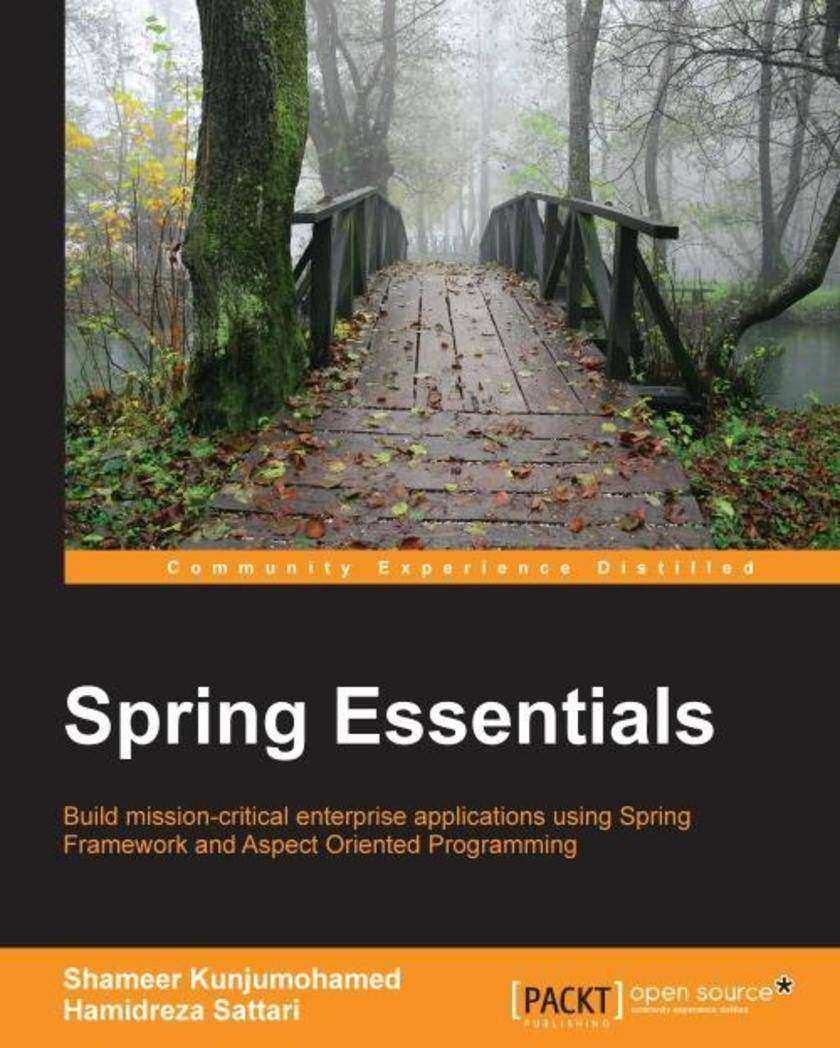
Spring Essentials
¥80.65
Build mission-critical enterprise applications using Spring Framework and Aspect Oriented ProgrammingAbout This BookStep into more advanced features of aspect-oriented programming and API components to build enterprise grade systemsBuild lightning-fast web applications and REST APIs using Spring MVC and its asynchronous processing capabilities with the view technologies of your choiceExplore simplified but powerful data access techniques including JPA (Java Persistence Architecture) repositories and NoSQL data accessWho This Book Is ForIf you are a Java developer who is looking to master Enterprise Java Development using Spring Framework, then this book is ideal for you. Prior understanding of core Java programming and a high-level understanding of Spring Framework is recommended. Having sound knowledge of servlet-based web development in Java and basic Database concepts would be an advantage but not a requirement.What You Will LearnSet up and build standalone and web-based projects using Spring Framework with Maven or GradleGet familiar with JSP Form processing using Spring and Form Tag LibraryDevelop RESTful API applications for XML and JSON data transfers with non-blocking asynchronous capabilitiesExplore Spring’s comprehensive transaction support for declarative Transaction Management and its integration with Spring’s data access abstractionsInvestigate Spring Data access mechanisms with Spring Data Repositories, a simple and consistent data-access abstractionConstruct real-time applications using WebSocket with a SockJS fallback optionUnderstand how to secure your Spring Web and standalone applications using Spring Security declaratively and consistentlyGet to grips with the end-to-end development of an API-based modern SPA using EmberJS at the front end and SpringMVC at the back endIn DetailSpring is an open source Java application development framework to build and deploy systems and applications that run on the JVM. It is the industry standard and the most popular framework among Java developers with over two-thirds of developers using it.Spring Essentials makes learning Spring so much quicker and easier with the help of illustrations and practical examples. Starting from the core concepts of features such as inversion of Control Container and BeanFactory, we move on to a detailed look at aspect-oriented programming. We cover the breadth and depth of Spring MVC, the WebSocket technology, Spring Data, and Spring Security with various authentication and authorization mechanisms.Packed with real-world examples, you’ll get an insight into utilizing the power of Spring Expression Language in your applications for higher maintainability. You’ll also develop full-duplex real-time communication channels using WebSocket and integrate Spring with web technologies such as JSF, Struts 2, and Tapestry. At the tail end, you will build a modern SPA using EmberJS at the front end and a Spring MVC-based API at the back end.By the end of the book, you will be able to develop your own dull-fledged applications with Spring.Style and approachThis book is a practical guide based on logical modules of the whole Spring Framework family, with a start-small approach, increasing in complexity as it progresses. Every chapter is an amalgamation of theory and practical examples, with further discussion on additional features and approaches.
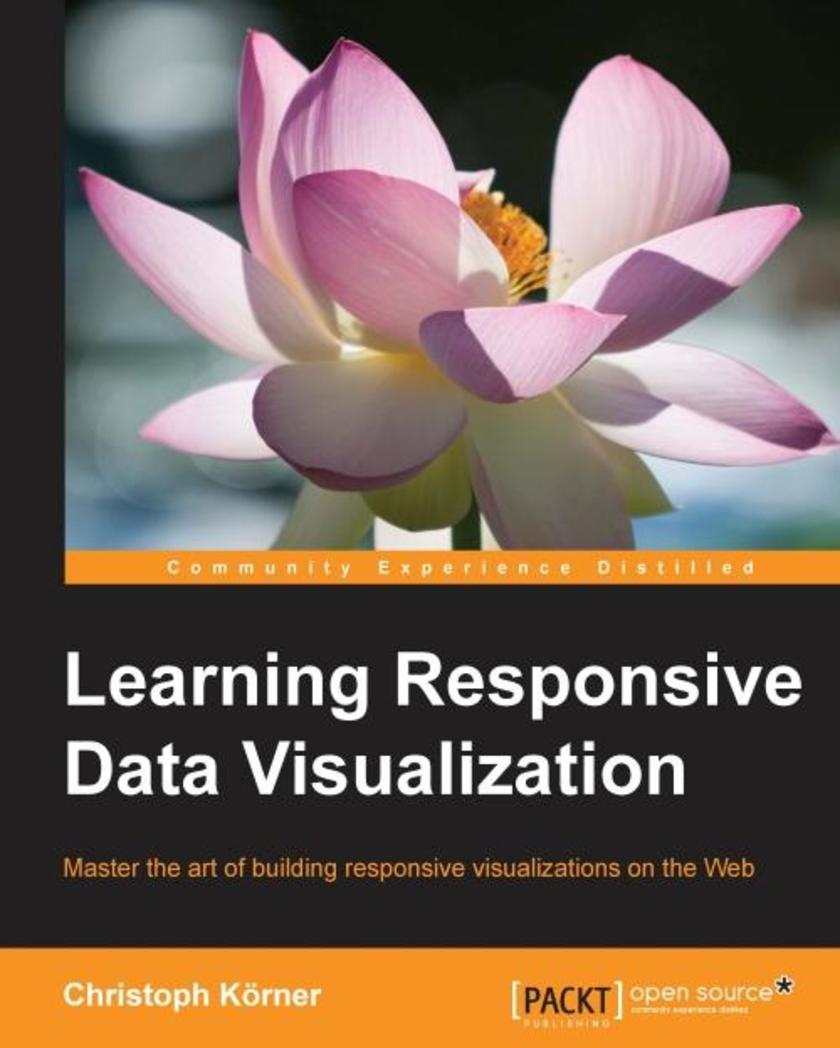
Learning Responsive Data Visualization
¥80.65
Master the art of building responsive visualizations on the Web About This Book Learn the techniques for building data visualizations that work well for all screen sizes Implement responsive techniques with popular libraries to get to grips with building responsive visualizations that work in the real world Incorporate responsive workflow in your data visualization process to build visualizations that take a mobile-first approach. Who This Book Is For Web developers and data science professionals who want to make their visualizations work for smaller screen sizes. Some basic knowledge of JavaScript and Data visualization is expected. What You Will Learn Get familiar with responsive design for data visualizations Understand the main concepts of D3.js to create interactive visualizations Unleash the power of Bootstrap to create stunning and responsive visualizations for all screen resolutions Implement Touch and Mouse interactions for mobile-first applications Design Transitions and Animations that impress in portrait and landscape Build a Responsive World Map using GeoJSON and D3.js In Detail Using D3.js and Responsive Design principles, you will not just be able to implement visualizations that look and feel awesome across all devices and screen resolutions, but you will also boost your productivity and reduce development time by making use of Bootstrap—the most popular framework for developing responsive web applications. This book teaches the basics of scalable vector graphics (SVG), D3.js, and Bootstrap while focusing on Responsive Design as well as mobile-first visualizations; the reader will start by discovering Bootstrap and how it can be used for creating responsive applications, and then implement a basic bar chart in D3.js. You will learn about loading, parsing, and filtering data in JavaScript and then dive into creating a responsive visualization by using Media Queries, responsive interactions for Mobile and Desktop devices, and transitions to bring the visualization to life. In the following chapters, we build a fully responsive interactive map to display geographic data using GeoJSON and set up integration testing with Protractor to test the application across real devices using a mobile API gateway such as AWS Device Farm. You will finish the journey by discovering the caveats of mobile-first applications and learn how to master cross-browser complications. Style and approach As the world shifts to mobile devices for consuming data on the Web, developers are faced with the unique challenge of making data visualizations work for their smaller screens. The growth of responsive web design enabled developers to adopt page layouts and media for smaller screens, but there is still little information available on how to adapt data visualizations for the smaller screens. This book fills this important gap and shows how responsive web design principles can be extended to create visualizations that work well regardless of the screen size, thereby allowing developers to build user-friendly visualizations that work well on all devices. In addition to covering some of the popular techniques and design patterns for building responsive visualizations, the book also shows readers how to implement these techniques with the help of some popular tools and libraries.
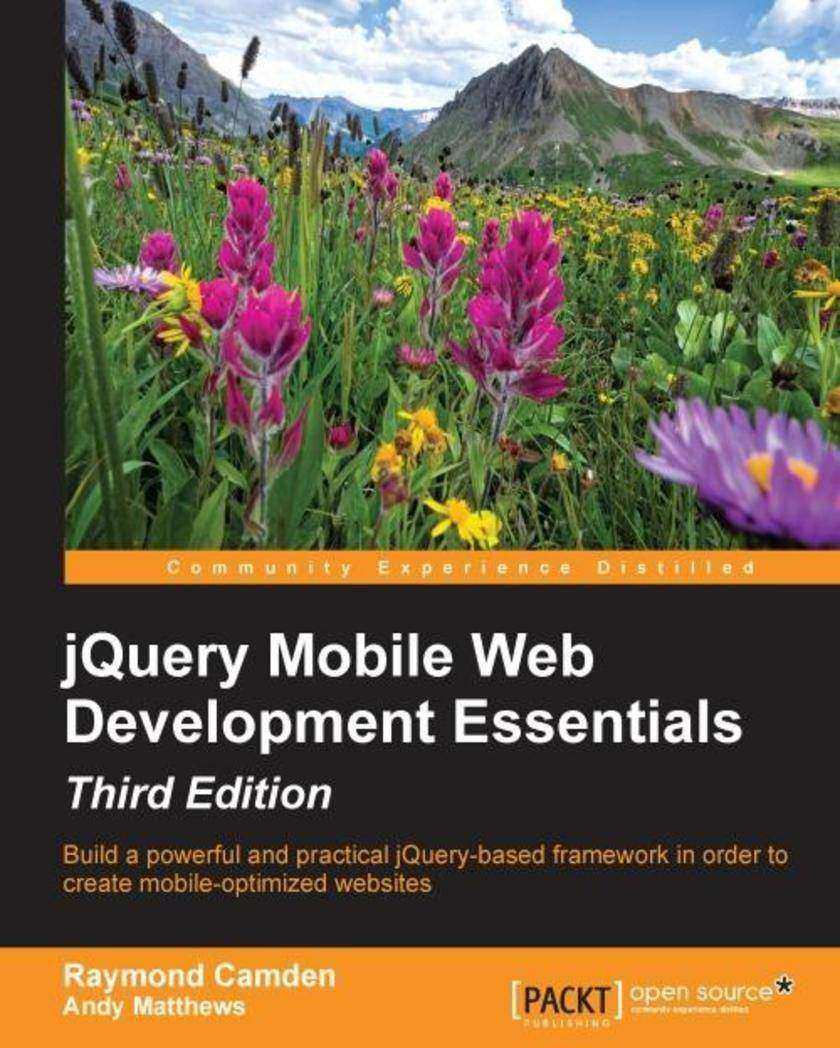
jQuery Mobile Web Development Essentials - Third Edition
¥80.65
Build a powerful and practical jQuery-based framework in order to create mobile-optimized websites About This Book Build websites with jQuery Mobile that work beautifully across a wide range of mobile devices Become a competent jQuery Mobile developer and learn the building blocks of jQuery Mobile’s component-driven design This book covers key concepts but with a focus on providing the practical skills required Who This Book Is For This book is for any web developer who is looking to create mobile-optimized websites. Basic knowledge of HTML is required. Minor familiarity with JavaScript would help but is not required. What You Will Learn Create mobile-optimized sites using simple HTML Structure your sites so users can browse them on mobile devices Find out how to work with multiple pages in the JQM framework and embed multiple pages in HTML files Enhance simple pages using various toolbars Include mobile-optimized forms for interactive sites Convert desktop sites into mobile versions Use HTML5’s local storage feature in jQuery Mobile to include persistent client-side storage Explore the rich sets of widgets and themes available and discover how to modify them for use in your jQuery Mobile site In Detail jQuery Mobile is a HTML5-based touch-optimized web framework. jQuery Mobile can be used to build responsive cross-platform websites and apps for a wide range of smartphones, tablets, and desktop devices. The jQuery Mobile framework can be integrated with other mobile app frameworks such as PhoneGap, IBM Worklight, and more. Introduction to jQuery Mobile explains how to add the framework to your HTML pages to create rich, mobile-optimized web pages with minimal effort. You’ll learn how to use jQuery Mobile’s automatic enhancements and configure the framework for customized, powerful mobile-friendly websites. We then dig into forms, events, and styling. You'll see how jQuery Mobile automatically enhances content, and will find out how to use the JavaScript API to build complex sites. We’ll introduce you to how jQuery Mobile can be themed as well looking into how JavaScript can be used for deep sets of customizations. The examples are ready to run and can be used to help kick-start your own site. Along the way, you will leverage all the concepts you learn to build three sample mobile applications. Style and approach Through a set of easy to follow instructions, we’ll show you how to use jQuery Mobile’s features one easy-to-use widget at a time. You’ll see examples for each feature as well as screenshots to demonstrate what they should look like on a mobile device. You can then take these example files and modify them as you learn to experiment.
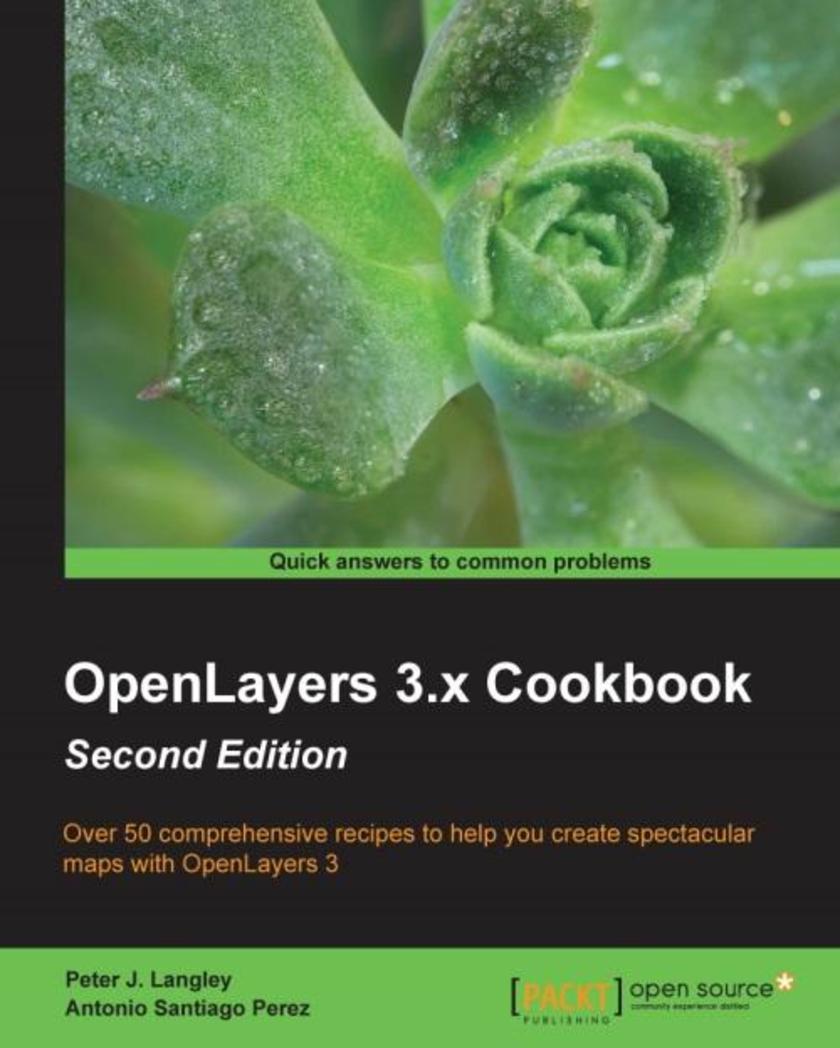
OpenLayers 3.x Cookbook - Second Edition
¥80.65
Over 50 comprehensive recipes to help you create spectacular maps with OpenLayers 3 About This Book Create highly customized mapping apps for the web with rich interactivity and diverse content using JavaScript See how successful mapping apps work and how they integrate with third-party services Packed full of code examples, screenshots, and explanations from professionals in the industry Who This Book Is For If you are a GIS-related professional with basic knowledge of web technologies and want to gain in-depth knowledge of creating web mapping applications, then this book is for you. The recipes will be appropriately mixed to suit JavaScript beginners or experts and cover basic to advanced topics on OpenLayers. What You Will Learn Create stunning maps, and understand projection. Add customized raster and vector layers Work with important tile providers Work with OGCs, WMS, and WFS compliant servers Read/write features from/to different data sources Style features to improve their visualization Understand events and work with the main controls Enhance maps with HTML5 technologies such as Geolocation In Detail Data visualization and analytics has become an important task across all technology-based industries. OpenLayers 3,is one of the most important and complete open source JavaScript mapping libraries today. Throughout this book, you will go through recipes that expose various features of OpenLayers 3, allowing you to gain an insight into building complex GIS web applications. You’ll get to grips with the basics of creating a map with common functionality and quickly advance to more complicated solutions that address modern challenges. You will explore into maps, raster and vector layers and styling in-depth. This book also includes problem solving and how-to recipes for the most common and important tasks. The range of recipes includes: creating basic maps, working with raster and vector layers, understanding events,working with the main controls, reading features from different data sources, styling features, and understanding the underlying architecture. It will also cover solutions and optimizations to challenges commonly faced in modern applications. Style and approach This book teaches you how to create stunning maps that are highly interactive and visually appealing with the help of 50 handpicked recipes. Each recipe will address your need to visualize data on a map. Just follow the steps in the recipes to create maps of your choice in no time.
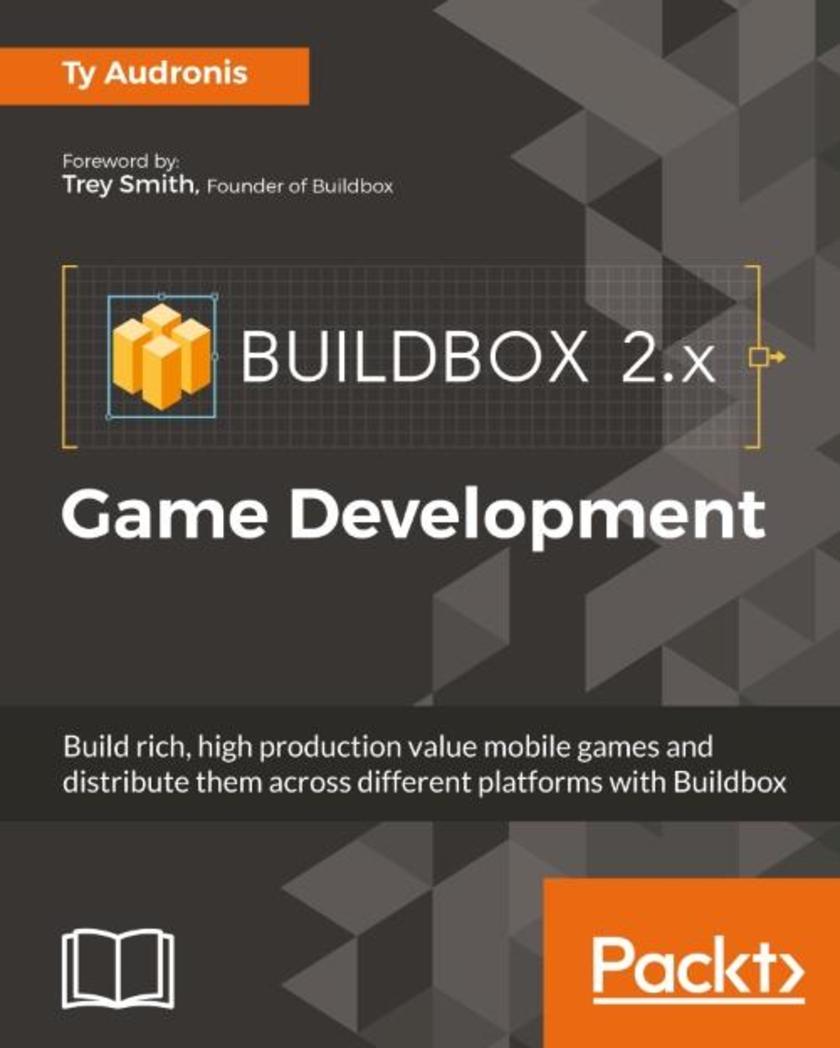
Buildbox 2.x Game Development
¥80.65
Build rich, high production value mobile games and distribute them across different platforms with Buildbox About This Book Create captivating 2D & 2.5D (isometric) video games for all platforms Leverage Buildbox to monetize and prepare your games for distribution This step-by-step tutorial will get you generating complex and media rich games with no coding experience Who This Book Is For This book caters to those who have an interest or desire to create their own mobile games either as a hobbyist or who are looking to enhance their skills as a professional games developer. No coding experience is required. What You Will Learn Create the illusion of a 3D background in your game using parallax Add advanced controls and obstacles to our first world Develop assets (graphic and audio) for the Buildbox engine Design games based on the capabilities and limitations of Buildbox and their target platforms Compile and distribute video games on various channels such as Steam, iOS store, Android stores, and the Mac App Store Optimize your games to get the absolute best quality within platform restrictions Conquer common issues experienced with Buildbox development In Detail Buildbox is an “any skill level” development platform to develop video games with no coding experience. It also exports these games to be compiled for any platform (from Windows to Mac to iOS to Android and Blackberry) all using the same graphic user interface. Using an example as a tutorial, we will relate the driving principles and you’ll see how you can implement these principles to develop any games on the platform. We begin by setting expectations and providing a brief overview of the software. But it’s not long before you “dive in” to creating your first video game. You will actually have a playable level (“world”) by the end of the second chapter. Later on, you’ll learn everything from basic graphics creation to advanced world design while you refine your first game, called “Ramblin’ Rover.” All along the way, you will see how certain functions could be used in tandem to create other types of games; hoping to spark imagination. We will follow the principles and process of monetization through ads and in-game rewards. Lastly, we will go through the process of exporting, compiling, and preparing your storefront to sell the games you will eventually create. Style and approach This book follows a tutorial-based approach that teaches through examples, while also providing the necessary principles to enable you to abstract these principles into any game you want to make.
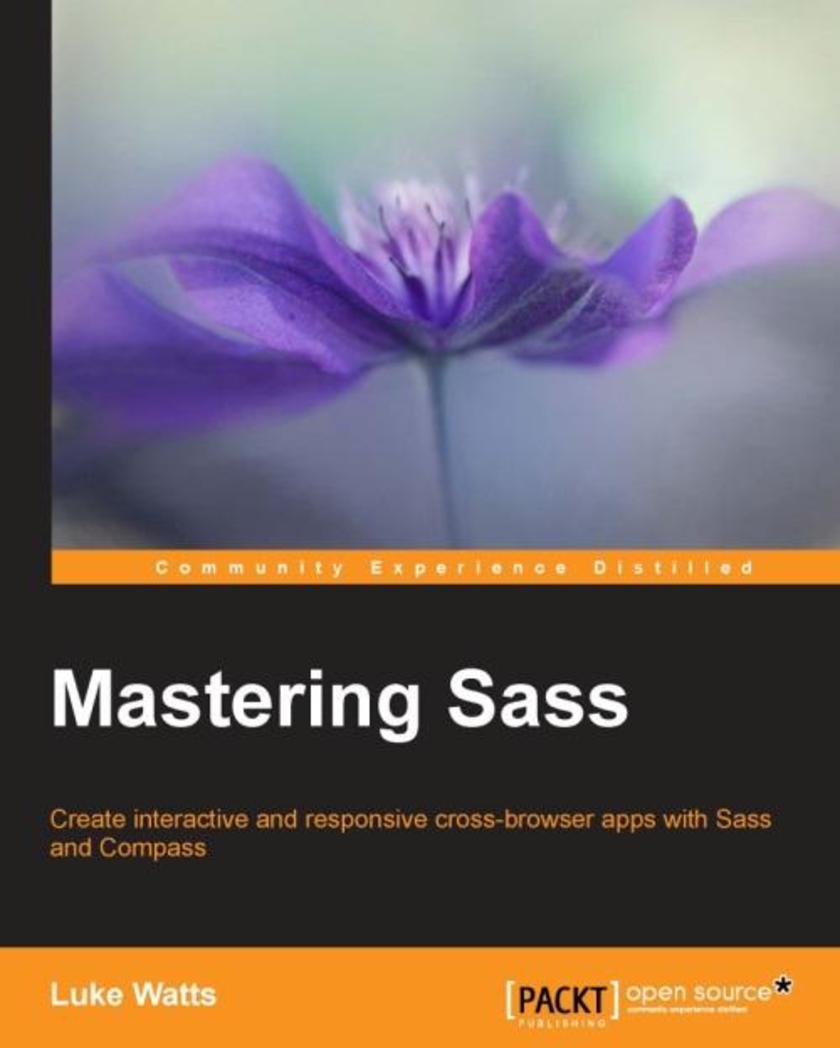
Mastering Sass
¥80.65
Create interactive and responsive cross-browser apps with SASS and Compass About This Book Create data-intensive, highly scalable apps using Sass and COMPASS Master the concepts of Sass and COMPASS and unleash your potential to develop enterprise-grade apps This book is an experts’ guide on leveraging Sass and COMPASS features Who This Book Is For This book is aimed at those who know CSS3 and HTML5 quite well and who've built a few small-to-medium-sized websites from scratch using Sass and Compass. What You Will Learn Master Sass and Compass features Familiarize yourself with CSS and HTML concepts that are vital for a good Sass workflow. Build real-world websites focusing on layouts and content aspects Work on a grid system using Compass and Susy Automate your workflow with Gulp Write functions and mixins to leverage the control flow In Detail CSS and Sass add elegance and excellence to the basic language, and consist of a CSS-compatible syntax that allows you to use variables, nested rules, mixins, inline imports, and much more. This book will start with an overview of the features in Sass and Compass, most of which you'll already be familiar; however, this will ensure you know what’s expected as the book goes deeper into Sass and Compass. Next you will learn CSS and HTML concepts that are vital to a good Sass workflow. After all, Sass exists to simplify writing CSS, but it won’t teach you how to make clean, scalable, reusable CSS. For that, you need to understand some basic concepts of OOCSS, SMACCS, and Atomic Design. Once you’ve brushed up on the important concepts, it’s time to write some Sass. Mainly you’ll write a few functions and mixins that really leverage control flow using @if / @else loops and you’ll learn how to figure out when and why things are going wrong before they bring you to a stop. Moving further, you’ll learn how to use @debug, @warn and @error to properly handle errors. You’ll also learn about Gulp and how to use it to automate your workflow and reduce your repetitive tasks. And finally you’ll learn about sourcemaps. With sourcemaps, you’ll be able to write, debug, and view your Sass and Compass all from within the browser. It’ll even LiveReload too! As a bonus, you’ll take a look at that funky Flexbox, currently all the rage! You’ll learn how powerful and flexible it really is, and how you can use it with Compass. Best of all, it falls back very gracefully indeed! In fact, you’ll be able to apply it to any existing project without having to change a line of the original CSS. Style and approach This book will provide readers with practical, actionable expertise to enhance their knowledge

Kali Linux 2 – Assuring Security by Penetration Testing - Third Edition
¥80.65
Achieve the gold standard in penetration testing with Kali using this masterpiece, now in its third edition! About This Book Get a rock-solid insight into penetration testing techniques and test your corporate network against threats like never before Formulate your pentesting strategies by relying on the most up-to-date and feature-rich Kali version in town—Kali Linux 2 (aka Sana). Experience this journey with new cutting-edge wireless penetration tools and a variety of new features to make your pentesting experience smoother Who This Book Is For If you are an IT security professional or a student with basic knowledge of Unix/Linux operating systems, including an awareness of information security factors, and you want to use Kali Linux for penetration testing, this book is for you. What You Will Learn Find out to download and install your own copy of Kali Linux Properly scope and conduct the initial stages of a penetration test Conduct reconnaissance and enumeration of target networks Exploit and gain a foothold on a target system or network Obtain and crack passwords Use the Kali Linux NetHunter install to conduct wireless penetration testing Create proper penetration testing reports In Detail Kali Linux is a comprehensive penetration testing platform with advanced tools to identify, detect, and exploit the vulnerabilities uncovered in the target network environment. With Kali Linux, you can apply appropriate testing methodology with defined business objectives and a scheduled test plan, resulting in a successful penetration testing project engagement. Kali Linux – Assuring Security by Penetration Testing is a fully focused, structured book providing guidance on developing practical penetration testing skills by demonstrating cutting-edge hacker tools and techniques with a coherent, step-by-step approach. This book offers you all of the essential lab preparation and testing procedures that reflect real-world attack scenarios from a business perspective, in today's digital age. Style and approach This practical guide will showcase penetration testing through cutting-edge tools and techniques using a coherent, step-by-step approach.
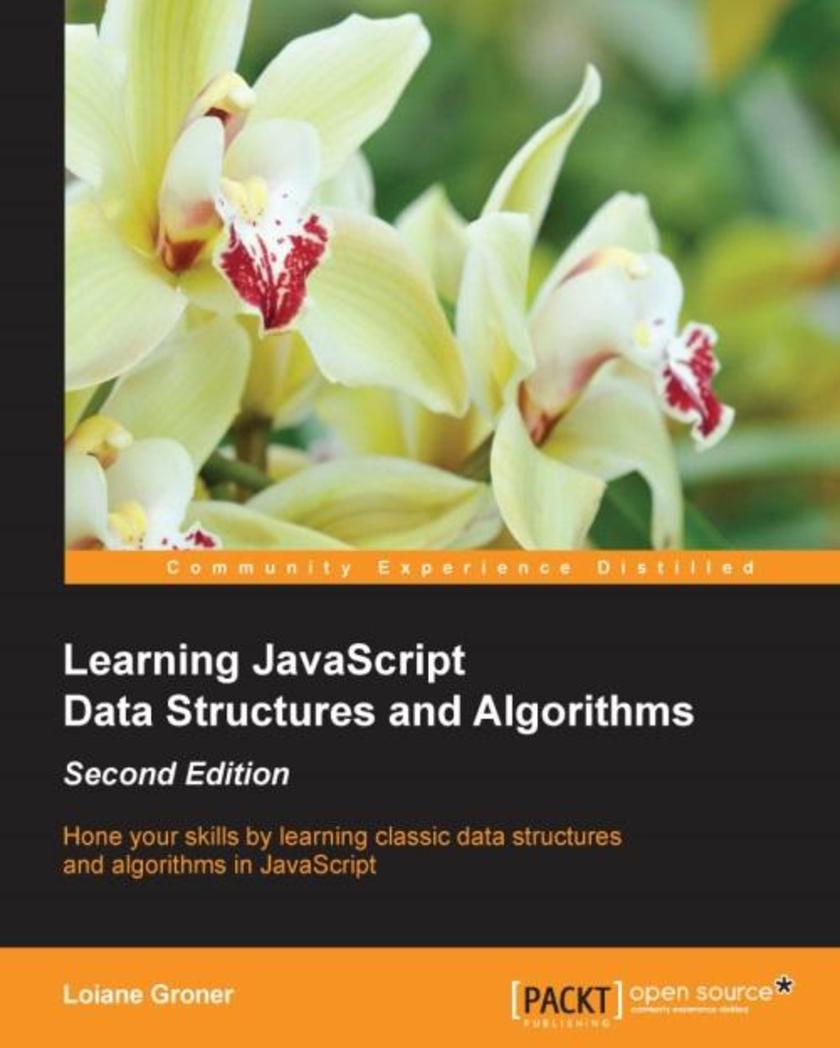
Learning JavaScript Data Structures and Algorithms - Second Edition
¥80.65
Hone your skills by learning classic data structures and algorithms in JavaScript About This Book Understand common data structures and the associated algorithms, as well as the context in which they are used. Master existing JavaScript data structures such as array, set and map and learn how to implement new ones such as stacks, linked lists, trees and graphs. All concepts are explained in an easy way, followed by examples. Who This Book Is For If you are a student of Computer Science or are at the start of your technology career and want to explore JavaScript’s optimum ability, this book is for you. You need a basic knowledge of JavaScript and programming logic to start having fun with algorithms. What You Will Learn Declare, initialize, add, and remove items from arrays, stacks, and queues Get the knack of using algorithms such as DFS (Depth-first Search) and BFS (Breadth-First Search) for the most complex data structures Harness the power of creating linked lists, doubly linked lists, and circular linked lists Store unique elements with hash tables, dictionaries, and sets Use binary trees and binary search trees Sort data structures using a range of algorithms such as bubble sort, insertion sort, and quick sort In Detail This book begins by covering basics of the JavaScript language and introducing ECMAScript 7, before gradually moving on to the current implementations of ECMAScript 6. You will gain an in-depth knowledge of how hash tables and set data structure functions, as well as how trees and hash maps can be used to search files in a HD or represent a database. This book is an accessible route deeper into JavaScript. Graphs being one of the most complex data structures you’ll encounter, we’ll also give you a better understanding of why and how graphs are largely used in GPS navigation systems in social networks. Toward the end of the book, you’ll discover how all the theories presented by this book can be applied in real-world solutions while working on your own computer networks and Facebook searches. Style and approach This book gets straight to the point, providing you with examples of how a data structure or algorithm can be used and giving you real-world applications of the algorithm in JavaScript. With real-world use cases associated with each data structure, the book explains which data structure should be used to achieve the desired results in the real world.
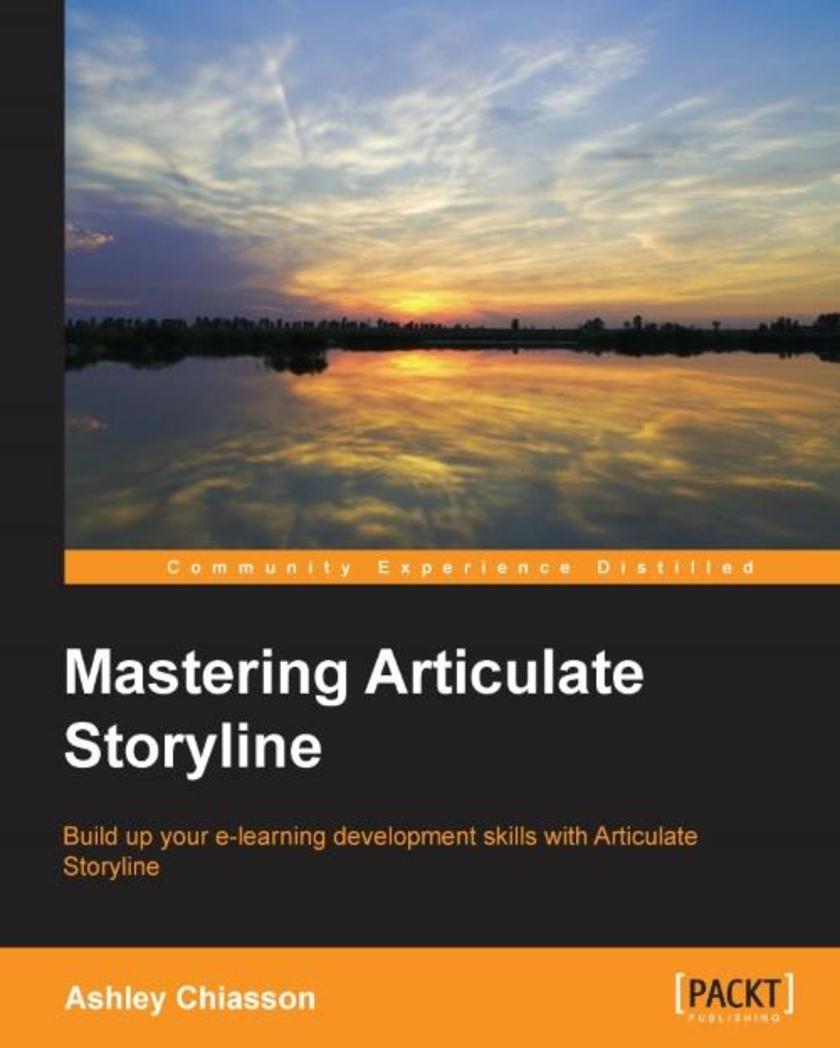
Mastering Articulate Storyline
¥80.65
Build up your e-learning development skills with Articulate Storyline About This Book Develop interactive e-learning projects using advanced techniques Impress your clients and/or audience with out-of-the-box interactions Step-by-step walkthroughs provide practical solutions Who This Book Is For This book is for anyone experienced in using the basic functions of Articulate Storyline who are yearning to learn more. It’s designed to provide a brief overview of key concepts, to help you refresh your knowledge of common functions, and teach you how to push Storyline to the limit! What You Will Learn Familiarize yourself with best practices for e-learning development Review key Storyline concepts before diving in deep with development Discover new ways of working within Storyline to extend slide content and enhance interactivity Personalize your story with advanced variable-based interactions See how JavaScript can be used in your stories to do some really neat things Assess your learners using customized assessment options and find out how to troubleshoot common issues Customize the learning experience by modifying the player properties and publishing settings Customize your story and prepare it for publishing In Detail Storyline is a powerful e-learning authoring tool that allows you to take your creativity to the next level. However, more often than not, projects don't require such complex interactions, leaving Storyline's full capabilities untapped. This book will provide you with the information you need to take your Storyline development up a notch by leveraging the full suite of possibilities Storyline has to offer. You will be provided with a refresher of the key concepts before we take you deep into the exciting world of enhanced interactivity, variables, and even some JavaScript—oh my! With downloadable activities, you can either follow along and compare your output, use the activities as they are, modify the activities to suit your own needs, or reverse-engineer the activities to better understand how they were developed. Style and approach You’ll get hands-on working with project files that were created with you in mind. As you move through each chapters, the practical, step-by-step approach will get you using some of the more advanced features of Storyline to create polished and snazzy interactions.
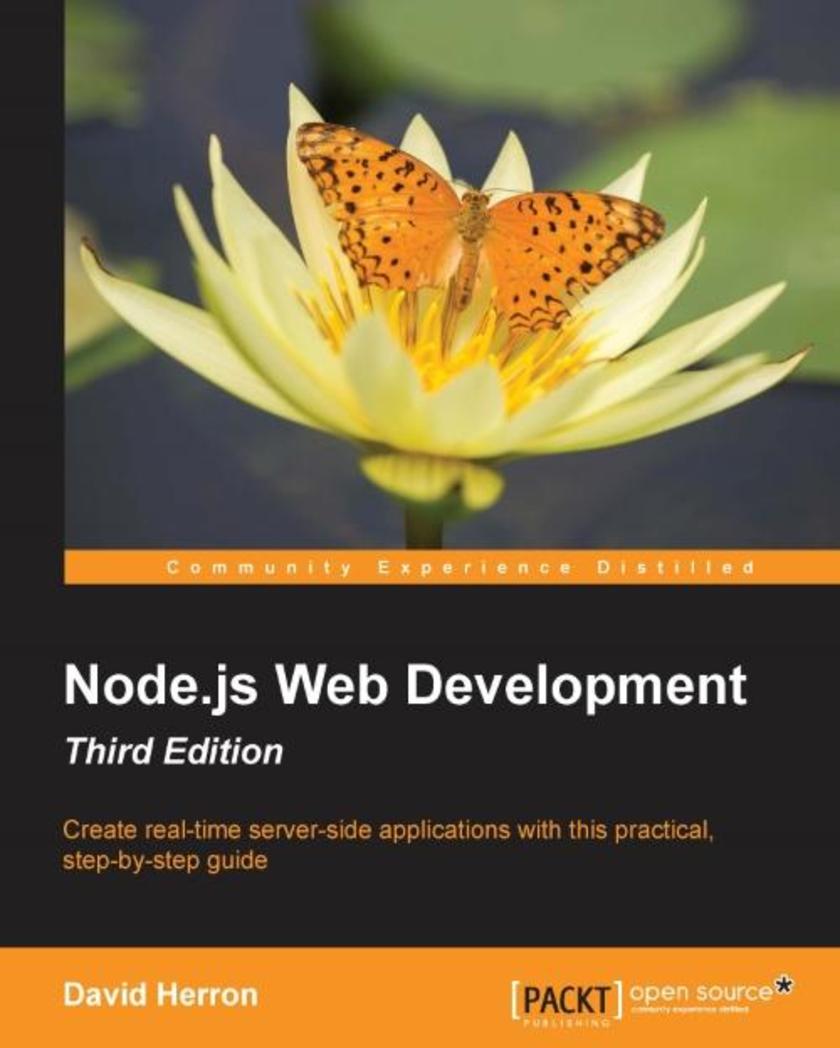
Node.js Web Development - Third Edition
¥80.65
Create real-time server-side applications with this practical, step-by-step guide About This Book Learn about server-side JavaScript with Node.js and Node modules through the most up-to-date book on Node.js web development Understand website development both with and without the Connect/Express web application framework Develop both HTTP server and client applications Who This Book Is For This book is for anybody looking for an alternative to the "P" languages (Perl, PHP, and Python), or anyone looking for a new paradigm of server-side application development. You should have at least a rudimentary understanding of JavaScript and web application development. What You Will Learn Install and use Node.js for both development and deployment Use the Express application framework Configure Bootstrap for mobile-first theming Use data storage engines such as MySQL, SQLITE3, and MongoDB Understand user authentication methods, including OAuth, with third-party services Deploy Node.js to live servers, including microservice development with Docker Perform unit testing with Mocha Perform functional testing of the web application with CasperJS In Detail Node.js is a server-side JavaScript platform using an event driven, non-blocking I/O model allowing users to build fast and scalable data-intensive applications running in real time. Node.js Web Development shows JavaScript is not just for browser-side applications. It can be used for server-side web application development, real-time applications, microservices, and much more. This book gives you an excellent starting point, bringing you straight to the heart of developing web applications with Node.js. You will progress from a rudimentary knowledge of JavaScript and server-side development to being able to create and maintain your own Node.js application. With this book you'll learn how to use the HTTP Server and Client objects, data storage with both SQL and MongoDB databases, real-time applications with Socket.IO, mobile-first theming with Bootstrap, microservice deployment with Docker, authenticating against third-party services using OAuth, and much more. Style and Approach This book is a practical guide for anyone looking to develop striking and robust web applications using Node.js.
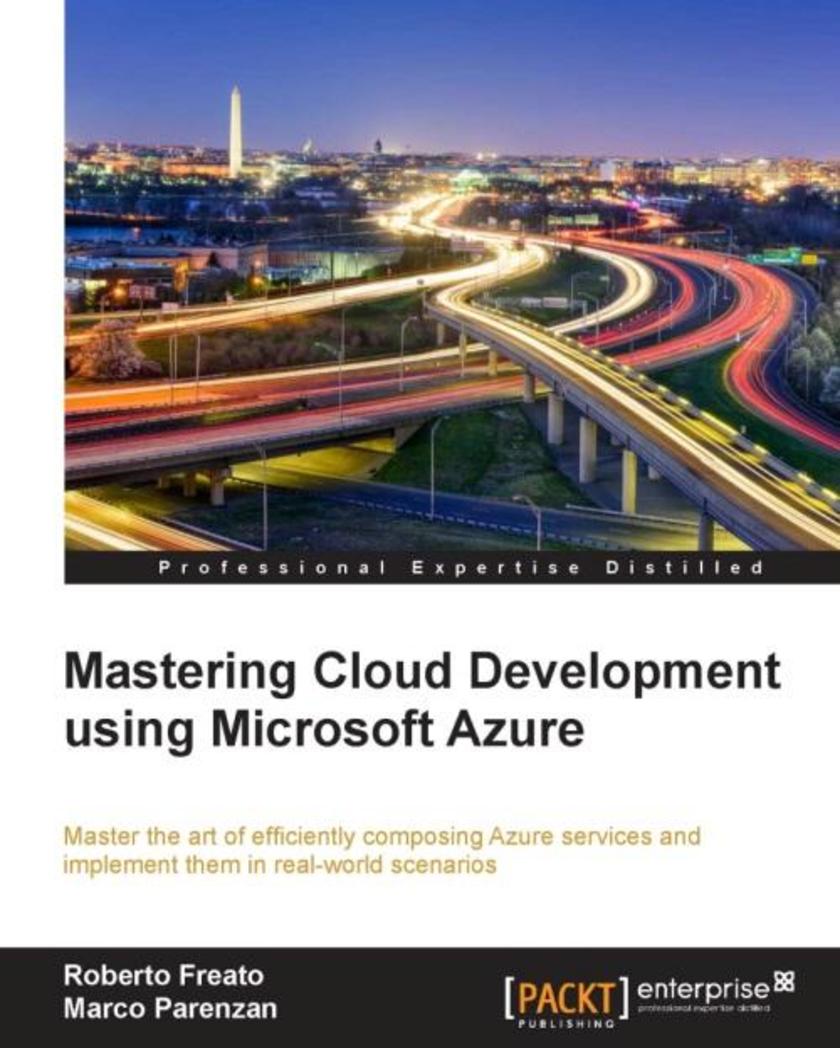
Mastering Cloud Development using Microsoft Azure
¥80.65
Master the art of efficiently composing Azure services and implement them in real-world scenarios About This Book Build an effective development environment in Azure using the right set of technologies. Architect a full-stack solution in the cloud to choose the best service set A comprehensive guide full of real-life examples to help you take your developer skills up a notch Who This Book Is For If you are a developer, a full-stack developer, or an architect with an intermediate level understanding of cloud computing and Microsoft Azure, and you want to take your skills up a notch, this book is for you. Prior knowledge and understanding of cloud development strategies is assumed. What You Will Learn Set up a development environment with VMs, ARM, and RemoteApp Connect with VPNs to manage security and backups Establish a front-end architecture with AppService, storage, search, and caching Implement identity solutions, integrate applications, and use data Integrate cross-platform mobile applications with the cloud Consistently build and manage an API layer for millions of users Work with messages in the enterprise Deploy your services as an IT expert with ARM templates In Detail Microsoft Azure is a cloud computing platform that supports many different programming languages, tools, and frameworks, including both Microsoft-specific and third-party software and systems. This book starts by helping you set up a professional development environments in the cloud and integrating them with your local environment to achieve improved efficiency. You will move on to create front-end and back-end services, and then build cross-platform applications using Azure. Next you’ll get to grips with advanced techniques used to analyze usage data and automate billing operations. Following on from that, you will gain knowledge of how you can extend your on-premise solution to the cloud and move data in a pipeline. In a nutshell, this book will show you how to build high-quality, end-to-end services using Microsoft Azure. By the end of this book, you will have the skillset needed to successfully set up, develop, and manage a full-stack Azure infrastructure. Style and Approach This comprehensive guide to Azure has both explorative parts and step-by-step ones. Each chapter defines a learning path to a specific scenario, mixing the appropriate technologies and building blocks efficiently.
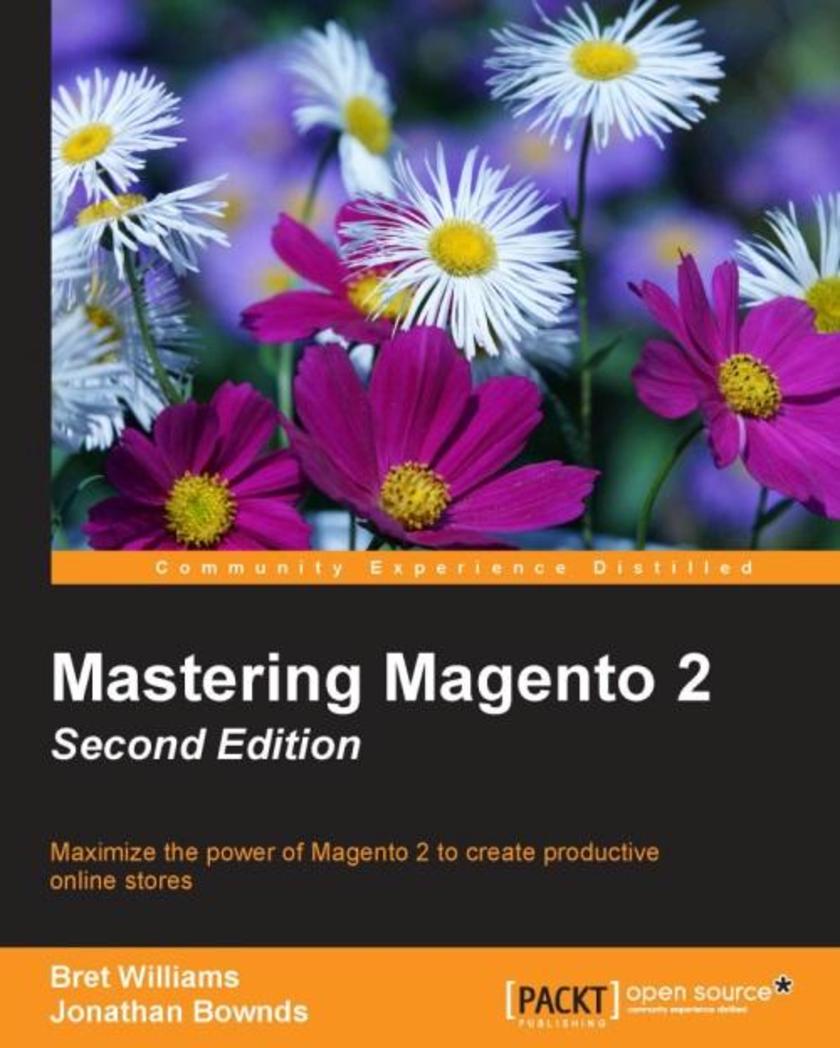
Mastering Magento 2 - Second Edition
¥80.65
Maximize the power of Magento 2 to create productive online stores About This Book Updated for Magento 2, this book offers a comprehensive coverage of all the new features of Magento to build modern online stores Exploit little-known techniques to extend, tune, and manage your Magento installation Detailed coverage to make your store run faster, better, and more productively Who This Book Is For This book is for web designers, developers, or e-commerce store-owners who design or manage Magento stores for their clients and want to gain an in-depth understanding of the various features of Magento 2. What You Will Learn Discover what makes Magento 2 different — and even more powerful Develop strategies to create multi-store environments Find out how to create themes and extend the functionality of Magento 2 Create sound development practices to insure code integrity and security Know the why, as well as the how, behind using Magento 2 In Detail The long-awaited release of the world's most popular online solution, Magento 2, is now out with an all new interface and several enhancements. This book offers you advanced guidance on managing, optimizing, and extending your store while taking advantage of the new features of Magento 2. This is a comprehensive guide to using the all new features and interface of Magento 2 to build, extend, and design online stores. From planning your Magento installation through to advanced techniques designed to make your store as successful as possible, this book is your roadmap to managing your Magento store. Focusing on Magento's Community version, the book covers everything from creating and managing multiple stores to fine-tuning Magento for speed and performance. You’ll learn how to manage categories, products, design themes, extensions, and more. Style and Approach This book will be a straightforward guide that will dive deep into both aspects of developing and administering beautiful and secure stores. Get a firm idea of the different tools that the latest version has to offer to ensure the best customer experience.
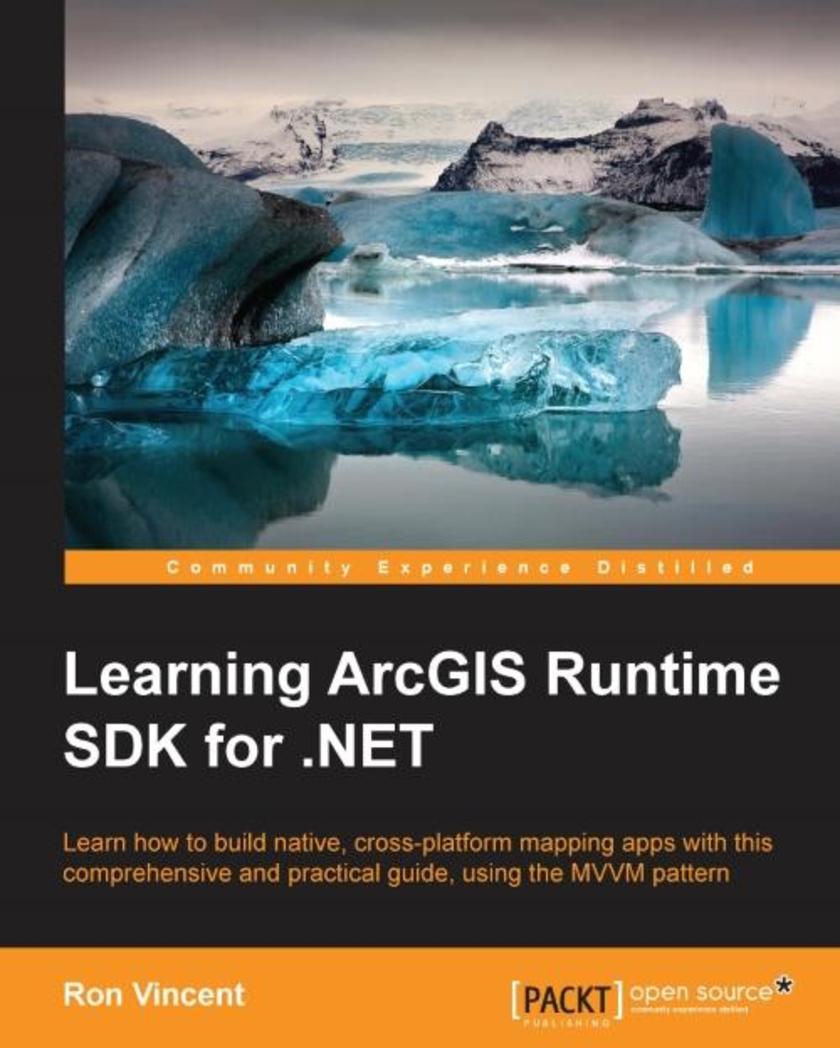
Learning ArcGIS Runtime SDK for .NET
¥80.65
Learn how to build native, cross-platform mapping apps with this comprehensive and practical guide, using the MVVM pattern About This Book Enhance the user experience with the power of ArcGIS runtime SDK for .NET. This clear, well segregated book has all the information you need on ArcGIS Runtime SDK. Just name it—this book has it! This highly practical book empowers you to build your own custom application! Get to know the inner details of ArcGIS Runtime SDK from our experts, in this book written by Ron Vincent, with 24 years' experience in the GIS industry and many in GIS training. Who This Book Is For This book caters to long-term users of Esri’s technologies that are new to mobile development or are transitioning from older Esri technologies such as ArcGIS Engine. It is also for users who are unfamiliar with Esri or GIS and are in need of a mapping solution for either their desktop or a mobile platform, or both. The book requires knowledge of .NET. What You Will Learn Understand and implement the MVVM pattern using MVVM Light Create and add layers from offline and online resources such as ArcGIS Online or ArcGIS for Server Create a 2D or 3D map and decide what kind of symbology to use Symbolize the layers based on the geometry Search and find objects in the layers Geocode an address and create a route using an address Edit layer objects from online content and offline content Test the application using test-driven development and then build and release the application for the intended audience In Detail ArcGIS is a geographic information system (GIS) that enables you to work with maps and geographic information. It can be used to create and utilize maps, compile geographic data, analyze mapped information, share and discover geographic information and manage geographic information in a database. This book starts by showing you where ArcGIS Runtime fits within Esri’s overall platform strategy. You'll create an initial map using the SDK, then use it to get an understanding of the MVVM model. You'll find out about the different kinds of layers and start adding layers, and you'll learn to transform maps into a 3D scene. The next chapters will help you comprehend and extract information contained in the maps using co-ordinates and layer objects. Towards the end, you will learn to set the symbology, decide whether to use 2D or 3D, see how to implement 2D or 3D, and learn to search and find objects. You'll also get to grips with many other standard features of the Application Programming Interface (API), including create applications and finally testing, licensing, and deploying them. Once completed, you will be able to meet most of the common requirements of any mapping application for desktop or mobile platforms. Style and approach This comprehensive book takes a completely practical approach, where every chapter explains the important concepts and demonstrates a practical application of them in a hands-on manner.
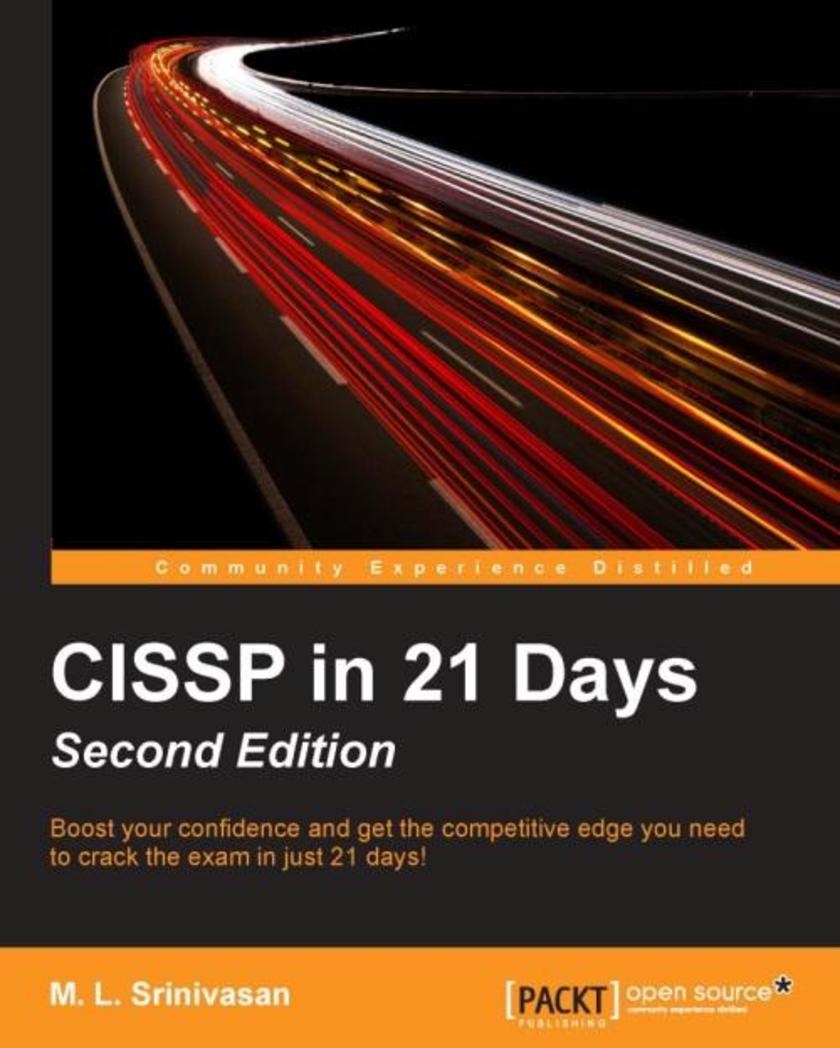
CISSP in 21 Days - Second Edition
¥80.65
Boost your confidence and get the competitive edge you need to crack the exam in just 21 days! About This Book Day-by-day plan to study and assimilate core concepts from CISSP CBK Revise and take a mock test at the end of every four chapters A systematic study and revision of myriad concepts to help you crack the CISSP examination Who This Book Is For If you are a Networking professional aspiring to take the CISSP examination and obtain the coveted CISSP certification (considered to be the Gold Standard in Information Security personal certification), then this is the book you want. This book assumes that you already have sufficient knowledge in all 10 domains of the CISSP CBK by way of work experience and knowledge gained from other study books. What You Will Learn Review Exam Cram and Practice review questions to reinforce the required concepts Follow the day–by-day plan to revise important concepts a month before the CISSPexam Boost your time management for the exam by attempting the mock question paper Develop a structured study plan for all 10 CISSPdomains Build your understanding of myriad concepts in the Information Security domain Practice the full-blown mock test to evaluate your knowledge and exam preparation In Detail Certified Information Systems Security Professional (CISSP) is an internationally recognized and coveted qualification. Success in this respected exam opens the door to your dream job as a security expert with an eye-catching salary. But passing the final exam is challenging. Every year a lot of candidates do not prepare sufficiently for the examination, and fail at the final stage. This happens when they cover everything but do not revise properly and hence lack confidence. This simple yet informative book will take you through the final weeks before the exam with a day-by-day plan covering all of the exam topics. It will build your confidence and enable you to crack the Gold Standard exam, knowing that you have done all you can to prepare for the big day. This book provides concise explanations of important concepts in all 10 domains of the CISSP Common Body of Knowledge (CBK). Starting with Confidentiality, Integrity, and Availability, you will focus on classifying information and supporting assets. You will understand data handling requirements for sensitive information before gradually moving on to using secure design principles while implementing and managing engineering processes. You will understand the application of cryptography in communication security and prevent or mitigate strategies for network attacks. You will also learn security control requirements and how to assess their effectiveness. Finally, you will explore advanced topics such as automated and manual test result analysis and reporting methods. A complete mock test is included at the end to evaluate whether you're ready for the exam. This book is not a replacement for full study guides; instead, it builds on and reemphasizes concepts learned from them. Style and approach There are many overlapping concepts that are applicable to more than one security domain in the CISSP exam. Hence, the eight security domains are aligned in a logical order so as to cover the concepts in the most appropriate sequence in this guide. Each chapter provides an illustration in the form of a flow diagram at the start to supply an overall view of the concepts covered in that chapter. This will facilitate a bird's-eye view of the chapter contents and the core security concepts covered. You can refer to this book throughout while preparing for the test or most importantly systematically revise the eight domains on a day-by-day basis up to one month before the exam. Hence the chapters are divided into 21 convenient days.
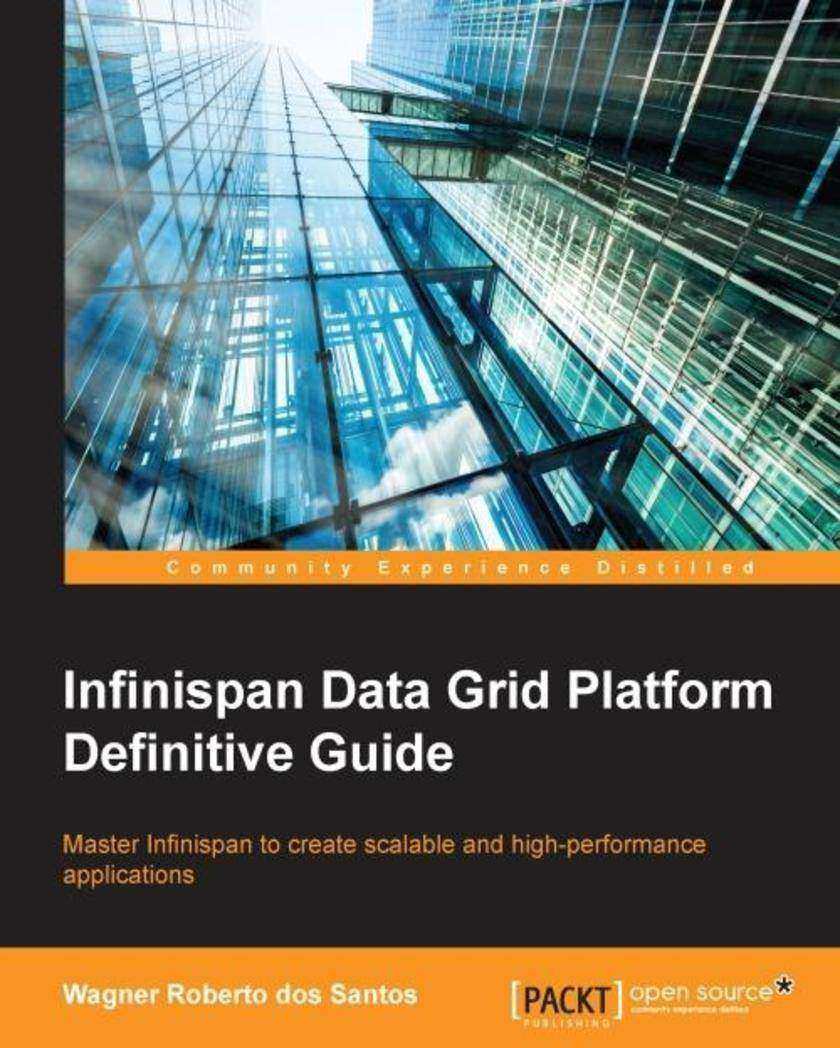
Infinispan Data Grid Platform Definitive Guide
¥80.65
This practical guide is intended for those who want to learn how to build extremely scalable applications. This book is easy to read and is aimed at Java enterprise developers with a solid knowledge of Java. However, no previous coding experience with Infinispan is required.
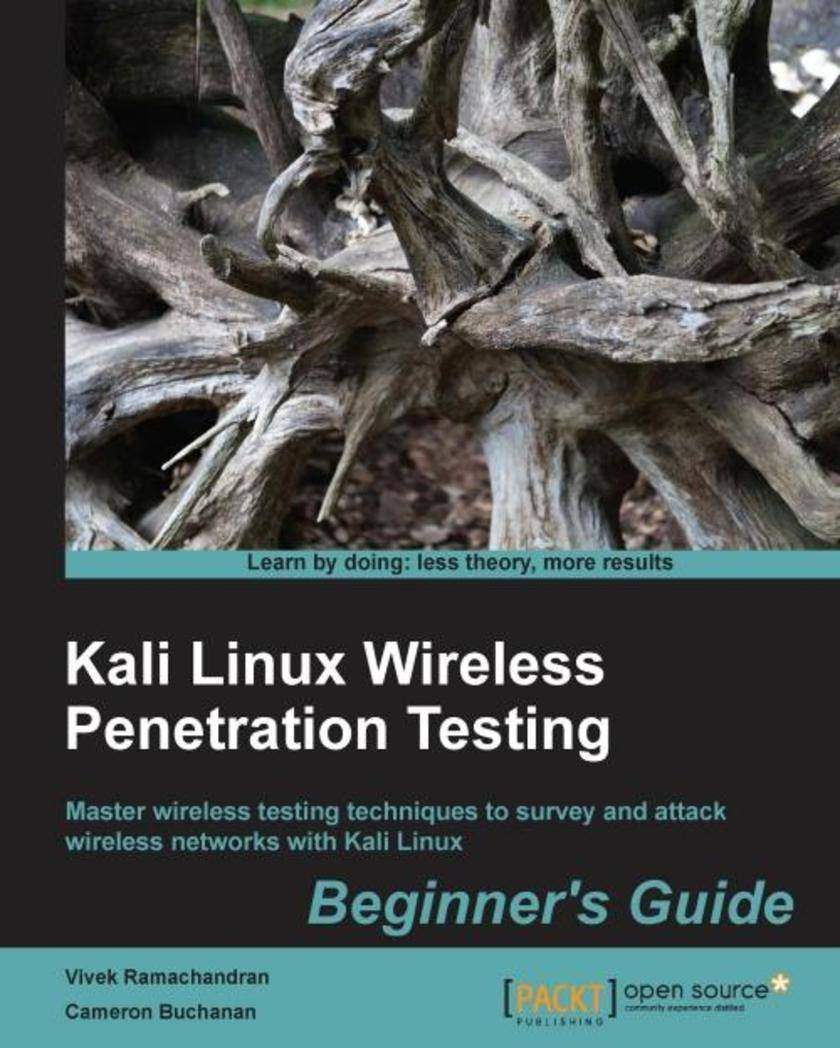
Kali Linux Wireless Penetration Testing: Beginner's Guide
¥80.65
If you are a security professional, pentester, or anyone interested in getting to grips with wireless penetration testing, this is the book for you. Some familiarity with Kali Linux and wireless concepts is beneficial.
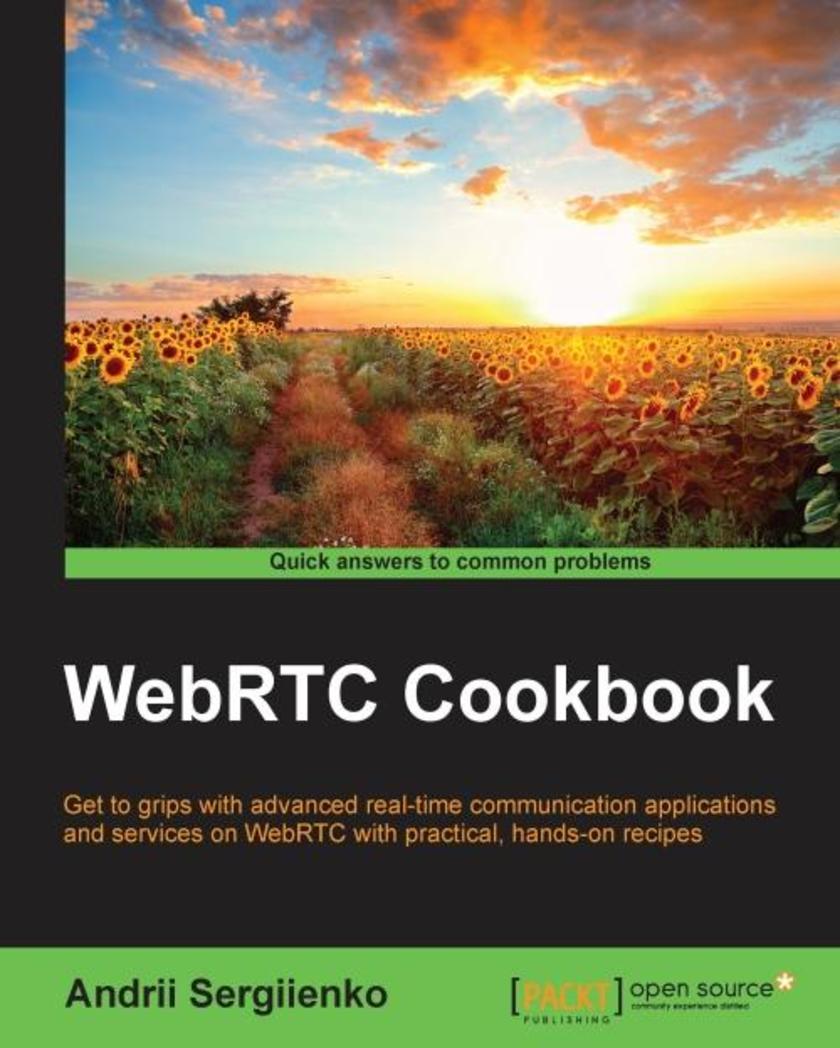
WebRTC Cookbook
¥80.65
If you are a JavaScript developer with a basic knowledge of WebRTC and software development, but want to explore how to use it in more depth, this book is for you.
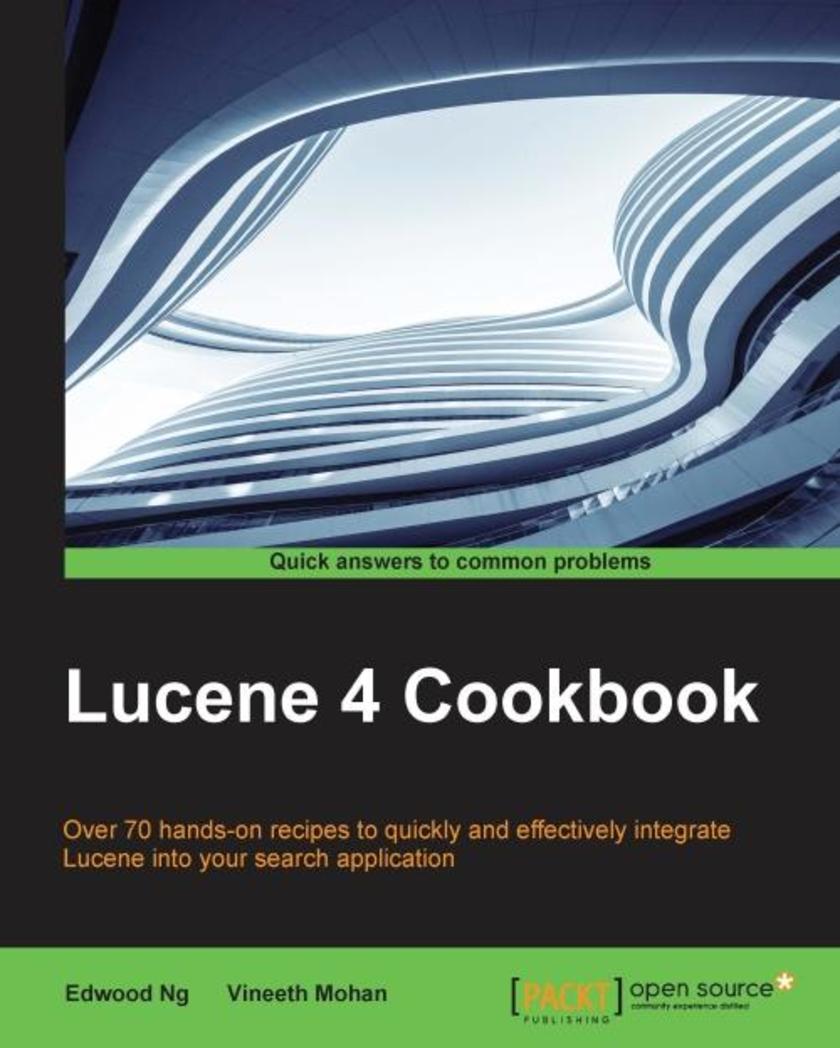
Lucene 4 Cookbook
¥80.65
This book is for software developers who are new to Lucene and who want to explore the more advanced topics to build a search engine. Knowledge of Java is necessary to follow the code samples. You will learn core concepts, best practices, and also advanced features, in order to build an effective search application.




 购物车
购物车 个人中心
个人中心



